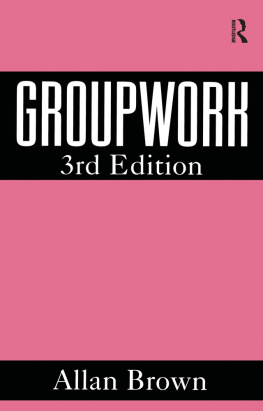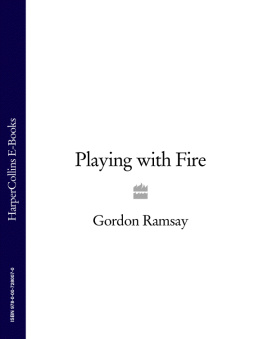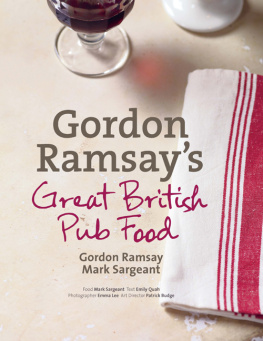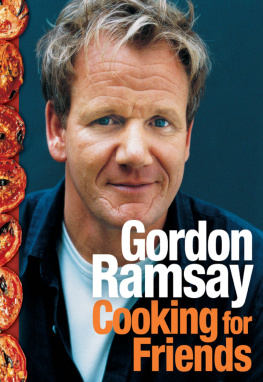Allan Ramsay and the Search for Horaces Villa
Allan Ramsay and the Search for Horaces Villa
Edited by Bernard D. Frischer and Iain Gordon Brown
with contributions by Patricia R. Andrew, John Dixon Hunt and Martin Goalen
First published 2001 by Ashgate Publishing
Reissued 2018 by Routledge
2 Park Square, Milton Park, Abingdon, Oxon, OX14 4RN
711 Third Avenue, New York, NY 10017, USA
Routledge is an imprint of the Taylor & Francis Group, an informa business
Copyright The individual contributors, 2001
The authors have asserted their moral rights.
All rights reserved. No part of this book may be reprinted or reproduced or utilised in any form or by any electronic, mechanical, or other means, now known or hereafter invented, including photocopying and recording, or in any information storage or retrieval system, without permission in writing from the publishers.
Notice:
Product or corporate names may be trademarks or registered trademarks, and are used only for identification and explanation without intent to infringe.
Publishers Note
The publisher has gone to great lengths to ensure the quality of this reprint but points out that some imperfections in the original copies may be apparent.
Disclaimer
The publisher has made every effort to trace copyright holders and welcomes correspondence from those they have been unable to contact.
A Library of Congress record exists under LC control number: 00054326
Typeset in Palatino by Bournemouth Colour Press, Parkstone, Poole, Dorset.
FRONTISPIECE
Allan Ramsay, self-portrait in red chalk, drawn on Ischia, 1776
ISBN 13: 978-1-138-73327-5 (hbk)
ISBN 13: 978-1-315-18775-4 (ebk)
Contents
Iain Gordon Brown
Iain Gordon Brown
John Dixon Hunt
Martin Goalen
Patricia R. Andrew
Bernard D. Frischer
Bernard D. Frischer and Iain Gordon Brown
Allan Ramsay, edited and annotated by Bernard D. Frischer
Patricia R. Andrew
FRONTISPIECE
Self-portrait by Allan Ramsay, 1776, National Portrait Gallery
PREFACE AND ACKNOWLEDGEMENTS; INTRODUCTION
ALLAN RAMSAY: ARTIST, AUTHOR, ANTIQUARY
SOME REFLECTIONS ON THE IDEA OF HORACES FARM
DESCRIBING THE VILLA: un rve virgilien
ILLUSTRATING HORACES VILLA: ALLAN RAMSAY, JACOB MORE AND JAKOB PHILIPP HACKERT
RAMSAYS ENQUIRY: TEXT AND CONTEXT
AN ENQUIRY INTO THE SITUATION AND CIRCUMSTANCES OF HORACES SABINE VILLA
BL | British Library |
BM | British Museum |
CIL | Corpus Inscriptionum Latinarum |
EUL | Edinburgh University Library |
NAS | National Archives of Scotland (formerly Scottish Record Office) |
NGS | National Gallery of Scotland |
NLS | National Library of Scotland |
OED | Oxford English Dictionary |
PIR I | Prosopographia imperii romanii, saec. I.II.III., pars I, Berlin 1897 |
PIR II | Prosopographia imperii romanii, saec. I.II.III., pars II, Leipzig, 1936 |
RSA | Royal Scottish Academy |
SNPG | Scottish National Portrait Gallery |
UCLA | University of California, Los Angeles |
Bernard D. Frischer is a graduate of Wesleyan University and received his Ph.D. in Classical philology from the Universitt Heidelberg. He is presently Professor of Classics at the University of California, Los Angeles, where he also directs the UCLA Cultural Virtual Reality Lab. Since 1997 he has been Director of excavations at Horaces Villa, under the auspices of the American Academy in Rome and the Archaeological Superintendency of Lazio. His special research interests include Augustan Rome, Roman topography, the reception of ancient culture since the Renaissance, and the use of virtual reality technology for the study and presentation of cultural heritage.
Iain Gordon Brown is a graduate of the universities of Edinburgh and Cambridge and is now Principal Curator of Manuscripts in the National Library of Scotland. He has published widely in the field of eighteenth-century cultural history, where his research has concentrated on the literature, architecture, antiquarian thought and taste of the age. His books, articles and essays cover such topics as the careers of Allan Ramsay and Robert Adam, and he has a particular interest in the history of the Grand Tour. He is a Fellow of the Society of Antiquaries of London and the Royal Society of Edinburgh.
Patricia R. Andrew studied at the University of Nottingham and received her Ph.D. in art history from the University of Edinburgh, specializing in the work of Jacob More and his circle in Edinburgh and Rome. She has worked in museums in England and Scotland and is currently Assistant Director (Professional Services) for the Scottish Museums Council. Special research interests include the colony of British artists active in late eighteenth-century Italy, and research for exhibitions covering a wide variety of subject areas, both historical and contemporary.
John Dixon Hunt is a garden historian and editor of the international quarterly Studies in the History of Gardens and Designed Landscapes. He also edits the University of Pennsylvania Press monograph series Penn Studies in Landscape Architecture, in which his own work, Greater Perfections: The Practice of Garden Theory (published jointly with Thames & Hudson), has recently appeared. He has written widely on Italian, Dutch, English and American garden design, including Garden and Grove: The Italian Renaissance Garden in the English Imagination 16001750.
Martin Goalen, a practising architect, has taught at the universities of London and Cambridge and is currently Visiting Professor at University College London. He worked as architect to British School of Archaeology at Athens excavations at Perachora, Mycenae and Aghios Stephanos, and is currently collaborating in investigations at the Villa del Discobolo at Castelporziano, Lazio. His architectural work includes widely published new buildings as well as work at historical sites such as the Palace of Westminster. He publishes on the reception and interpretation of ancient architecture in the modern world, and has been a Sargent Fellow in Fine Art at the British School at Rome and Visiting Fellow at the British School of Archaeology in Athens.
When the Scottish painter Allan Ramsay set out for Italy in the 1770s to investigate the remains of what for some time had been thought to be Horaces villa, he was, considered superficially, simply engaging in an exercise of archaeological reconstruction. But the search for the poets house was also an attempt to obtain first-hand knowledge of Horace and everything he stood for by scrutinizing the remains of his estate and the landscape around it. The result of that search, Ramsays Enquiry into the Situation and Circumstances of Horaces Sabine Villa, Written during Travels through Italy in the Years 1775, 76 and 77, is not only a summary of and considerable contribution to what was known at that time about Horaces farm. Ramsays text also reveals in what manner the poet who embodied the ideals of British neo-classicism was reinterpreted at the end of the eighteenth-century. As so often in late eighteenth-century archaeology, investigating the classical past was not only an exercise in the acquisition of historical knowlege, but also a reconsideration of the meaning of that past for the present, and a way of constructing the identity of the investigator. Through his search for Horaces villa and its written account, Ramsay, the portrait painter whose career was in decline and whose health was failing, redefined himself as an archaeologist, a man of letters and an authority on one of the key figures in British neo-classicism. And knowing as we now know from the new excavations undertaken by Bernard Frischer, that the remains Ramsay investigated belonged primarily not to the structure of Horaces day but to a later complex on the site owned by a member of the imperial court, only adds to the appreciation of the importance of the Enquiry as a central document of neo-classicist self-fashioning in late eighteenth-century Great Britain.












